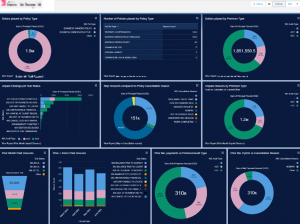It is well-known that litigation costs and business failures have been rising.
Today, bankruptcies are at an all-time high, but even more startling is the increase in businesses that simply lock their doors and walk away.
Adding to the problem are companies that were operating in the black, but now show too much red ink.
The results of this is an increase in companies that are paying their bills slower, asking for extended payment plans, paying their preferred or secured vendors first, then picking and choosing who to pay and who not to pay.
Statistics show that the average credit ratings of companies are declining and their “will to pay” is keeping pace. Adding to their burden is an aggressive move by the IRS and state authorities through increased audits resulting in (not anticipated) tax due with tax liens placed upon their business.
In addition to the credit grantor’s misery is the fact that debtors are more educated today about who to pay when to pay and who not to pay at all.
This trend and their education can be traced to the source, which is the public media, social networking through the internet, advice from their attorneys or peer-based experiences.
Too often we see debtor companies invite and use litigation as a means to an end. Debtor companies know that if litigation action is taken against them, they have a number of options and tactics they can use to their advantage.
What are those advantages debtors use to resist payment?
1. Time
Debtors and their attorneys know that when a suit is filed, they can use various stalling tactics allowed by the court systems. Debtors can buy as much as 18 months or more before they seriously are forced to make a payment decision.
Their tactics include the following:
- Avoiding service
- Disputes that need validated
- Continuances
- Motions for discovery
- Demanding witnesses
- No-show at trial resulting in default judgments with no revenue recovery pursuit
These tactics, in many cases, are intended to test your litigation policy and resolve to allow you to make errors that they can use to their advantage.
2. Money
Many debtors know since they are in business themselves that companies set a suit threshold before they will consider filing suit based on what the creditor believes is a balance size that justifies litigation.
Not knowing what it is but having knowledge of its existence gives them the advantage of waiting out collection agency phone calls, letters and threats of potential litigation and will wait to see if and when it happens.
Depending on the balance, many know for sure that suit will not be forthcoming so the bill remains unpaid.
3. Poor credit rating
Debtors who have a poor credit rating have the advantage. What more can you do to me? So why should I pay?
The problem here, if you are an unsecured creditor, is that they will pay their secured creditors on time and neglect your bill opting many times to simply find and switch to a competitor who will grant them credit or operate C.O.D. when needed. They have no sense of urgency.
4. Lack of good credit risk management procedures
Nothing intimidates a potential debtor more than complete and thorough credit risk investigation prior to adding them as a customer. It is a physiological fact that impacts their thought process from the beginning.
Having a weak policy or one that allows a company with poor predictive pay patterns to order on terms sends a message that advantage can be taken, at will, if needed.
5. Sympathetic court system
Let’s face it – the court system is overworked, crowded and has become more pro-debtor.
Cases for debt payment are being pushed out farther into the future by judges due to defendant requests for more time as a means to advance more pressing cases.
6. Countersuits
This tactic is very effective simply because it elevates the plaintiff’s costs, time and interjects uncertainty in decisions by the plaintiff and forces the plaintiff to consider their return on investment.
It forces credit grantors to ask themselves, what will be the cost to pursue the debt and defend against a countersuit? What are the odds of the plaintiff winning? What are the odds of the defendant winning? What will I gain in the end? Is the cost simply worth the time and return?
In some cases, the answer is yes, but in other cases, no.
7. Witnesses and depositions
This tactic is a very effective method of getting the case pulled at the plaintiff’s request due to the cost involved and time constraints on understaffed departments. Court systems are stopping the practice of allowing phone witness(es) depositions and forcing the plaintiffs to produce a specific witness in person, not allowing your collection agency to represent you or to use anyone available at your company.
Defendants and their attorney’s subpoena specific people as a “must” attend. If the plaintiff sends a witness, many times the defendant’s attorney will ask for a continuance forcing the witness and company to spend more money to the point that the return on investment will not be worth the effort.
8. Settlement on the courthouse steps
Too many times we have seen the litigation process advance, costing the plaintiff substantial time and money only to result in a settlement at the last minute, virtually within the courthouse just prior to hearing the case. Many of these settlements accepted are the same amount or slightly higher than what was offered in months previous during the collection phase of recovery.
The advantage for the defendant is that they have successfully bought the time to plan the re-payment on their terms.
The disadvantage to the plaintiff is that they have spent more money and time through litigation costs and increased attorney contingency fees for obtaining the settlement.
9. Judgments
When litigation is successful, the advantage to the defendant is that in many cases they can get a court-ordered payment plan better than what was offered during the collection phase of the process.
An additional advantage is that they will not stick with that plan and the Plaintiff and their attorney must keep spending time and money to pressure the defendant to make the scheduled payments.
10. Default judgments
Debtors know, especially if they have a poor credit rating, that a default judgment is nothing more than a legal document stating they owe the money. Something you and they already know.
The advantage for the defendant is that judicial enforcement is costly and many plaintiffs will not pursue the enforcement due to the additional costs. It is reported by many of our clients that their chosen attorney is remiss in pursuing enforcement because their client will not pay more for the enforcement and they will not want to incur cost out of pocket to do so.
They simply decide to pursue better case options. In this scenario, the defendant gets away without paying.
Today, more than ever a change in the status quo of litigation policy and procedures is needed.





